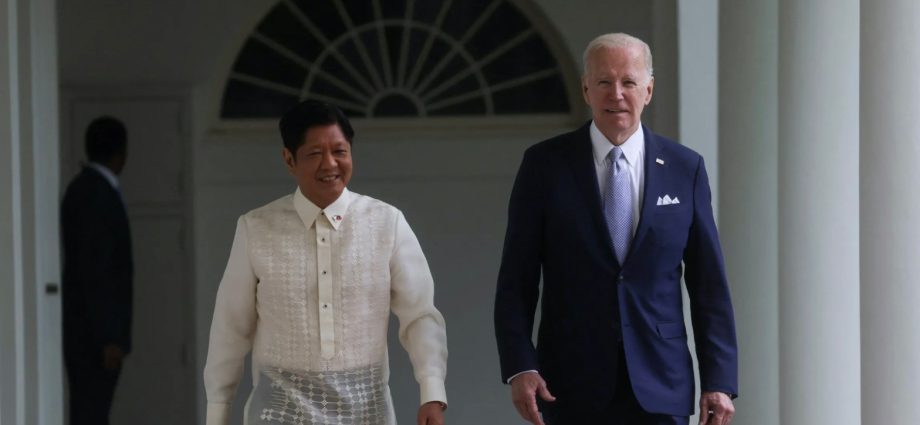At the ASEAN Summit in 2018, former Australian prime minister Scott Morrison argued that “our relationships with [the US and China] are different, and they’re both successful. Australia doesn’t have to choose and we won’t choose.”
Yet within two years, Australia found itself choosing decisively to align itself with the United States.
At the same 2018 summit, Singaporean Prime Minister Lee Hsien Loong took a less categorical approach to choosing sides. He said “I think it is very desirable for us not to have to take sides, but the circumstances may come where ASEAN may have to choose one or the other. I hope it does not happen soon.”
Since then, US-China competition has only grown more intense. Australia’s “push comes to shove” choice was never in doubt, given it has fought alongside the United States in every post-1945 war in which the United States was involved. But this is not so for ASEAN states.
ASEAN countries are being pulled in different directions — and their alignments may be up for grabs. No ASEAN state wants to make “invidious choices” between China and the United States. But it is instructive to look at how they are currently positioned between the two contending powers.
In an ongoing study, “The Anatomy of Choice: Southeast Asia between the Superpowers,” experts were invited to track the alignments of ASEAN members over time. Preliminary assessments of interactions with the two superpowers since 2014 suggest Laos, Cambodia and Myanmar lean strongly towards China, while Singapore and the Philippines are closer to the United States.

These countries probably do not see their existing positions as “invidious.” Given their geography, perception of economic opportunities and military procurement history, their alignment seems natural and has served them well.
These countries’ angst about not wanting to choose is less about maintaining strategic equidistance between the two superpowers and more about not moving drastically from where they are now.
In between these five states are the classic hedgers — Indonesia, Malaysia, Vietnam, Brunei and Thailand. These are the countries whose alignments may be persuadable.
The current positions of ASEAN countries are not fixed. A survey by the ISEAS-Yusuf Ishak Institute of Southeast Asians from elite educated backgrounds found yearly fluctuations in how ASEAN would choose if it were forced to align itself with the United States or China.
Comparing overall ASEAN sentiment between 2022 and 2023, the survey found a slight increase among those favoring alignment with the United States, from 57 to 61%.
Especially interesting are the country-specific results. Elite opinion in Cambodia and Laos swung drastically in favor of the United States between 2022 and 2023. Less drastic shifts towards China were seen in Myanmar, Brunei, Malaysia and Indonesia.
Going by elite opinion, the state of play remains in flux. As a former Singaporean ambassador to the United States quipped, “the United States should not ask Asian countries to choose. You may not like the results if you ask countries to choose.”
There are several key factors that are likely to shape the choices of ASEAN states. In terms of offering economic opportunities, China wins. With geography, continental Southeast Asia needs to accommodate China while maritime Southeast Asia looks to the United States.
For domestic politics, there is a general preference for the superpower agnostic about political systems — namely China. Estimation of US staying power is another consideration. Most studies conclude that general preferences lean in China’s favor.

During the Cold War, countries chose a wholesale approach, often on the basis of ideological affinity. Maritime Southeast Asia chose the United States and the West, and the mainland states aligned with China and the Soviet Union.
But today, Southeast Asia seems to be adopting a more piecemeal approach — ASEAN states buy into Chinese or US initiatives as they suit.
Chinese initiatives include the Asian Infrastructure and Investment Bank, the Belt and Road Initiative and the Regional Comprehensive Economic Partnership. China’s more recent proposals such as the Global Development, Global Security and Global Civilization Initiatives also suggest an active and purposive outreach to the world.
US initiatives include the aborted Trans-Pacific Partnership, the Free and Open Indo-Pacific and the Indo-Pacific Economic Framework.
If Southeast Asian countries are taking a piecemeal approach to choosing from these available options, China seems to offer more extensive and substantive opportunities for growth. For all its problems, the Belt and Road Initiative provides more incentives compared to the US-led schemes.
Even during the Covid-19 pandemic, China managed to “eke out a vaccine diplomacy victory” in Southeast Asia through the prompt delivery of its Sinovac and Sinopharm vaccines, despite the greater efficacy of US-donated mRNA vaccines.
Over time, Southeast Asian countries might find that they have inadvertently hitched their economic and strategic fortunes with one side.
Yet not all is lost for those keen on reversing this momentum. The recent experience of the United States with Pacific nations suggests the Global South retains significant goodwill and trust in the West.
By upping its game in response to Chinese efforts at wooing Pacific countries, the Biden administration fostered a US-Pacific Partnership in September 2022. In contrast, China’s attempt to create a more ambitious region-wide partnership in May 2022 foundered.
The challenge is undoubtedly greater in Southeast Asia. The resources the United States and its allies will need to bring are of a completely different scale, given the competition.
Yuen Foong Khong is Li Ka Shing Professor of Political Science at the Lee Kuan Yew School of Public Policy, National University of Singapore.
This article was originally published by East Asia Forum and is republished under a Creative Commons license.

